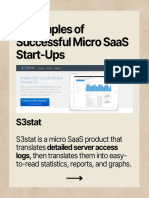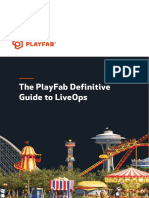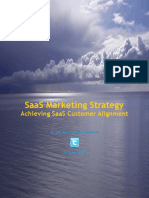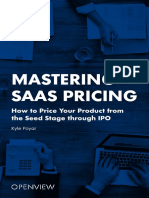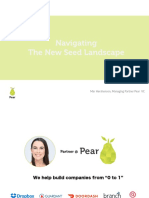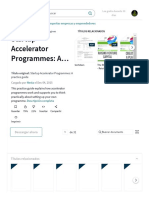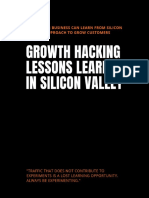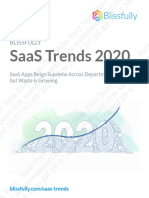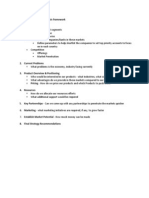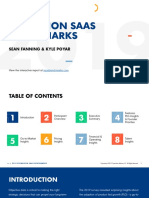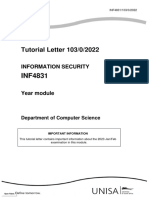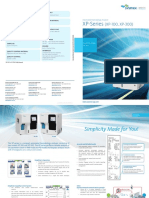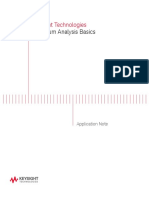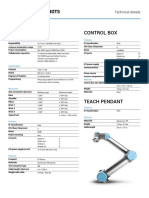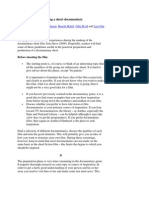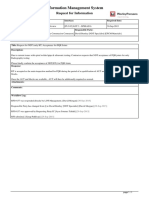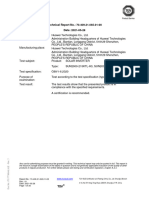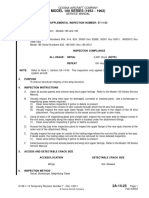Step to step guide on SAAS Product
Development Process
Companies are increasingly turning to technology as a way to build an empowered
and productive workforce. A recent study from BetterCloud has found that SaaS
applications account for 70% of all software usage among companies today.
As the internet has evolved and technology has improved, we're able to access
software solutions with ease. With more and more companies switching to SaaS
products, it has become significant to build SaaS product applications well. So let us
know about the SAAS Product Development Process from the below steps:
Step I:- Double Check your Idea
Before you start developing your SaaS product development process, it's important
to ask yourself some questions. Is there a need for the product? What do potential
users think about the idea so far?
Before you start building the SaaS product, speak with prospective customers and
ask them about their pain points. After all, you should always talk to your company's
C-level executives to get feedback on every detail before launching your service.
For example:
1. What is your SaaS product about?
2. Who is it for?
3. Are there any features or aspects that make it stand out from competitors?
Step II:- Define SaaS Requirements
You'll need to know what you're building if you want to launch a successful product.
Start by writing a list of the most common tasks. For example, in a CRM system, you
might create new prospects, add notes, and schedule activities. Your list doesn't
�need to be comprehensive--you're just going to refine it as you go. As your needs
grow, so will the requirements for your product.
Step III:- Develop a Budget
At this stage, it's important to figure out your budget. That way you get a better idea
about the entire product development process and how to plan resources.
Generally, the budget totals many different parts: design, programming, business
analysis, customer support, maintenance, and marketing. Depending on these
aspects, the time required to build a SaaS app varies. Ideally, it can take about 10
months for a SaaS app company to produce a high-quality product. However, most
MVPs (Minimum Viable Products) take about 6 months to complete.
Step IV:- Decide your Strategy and Model
Market research creates a foundation so that you can identify where your niche is
and what it's missing. How will you attract customers? Who is your ideal customer,
and how would they feel about what you're offering? Also, consider your resources
and the path to building a product and company.
Step V:- Choose The Technical Stack
The technology stack is a list of programming languages, frameworks, and tools that
are used in software development. Nowadays, many technologies provide a huge
variety of options to choose from.
Let’s talk about the unique aspects needed for SaaS applications and find out which
popular choices can help you with them.
Front-end :
Front-end development includes everything that users see on their screens. This is
where modern JavaScript frameworks come in - React, Angular or Vue.js. we prefer
�working with React while also keeping an eye on Vue.js if seeking lightweight and
easily maintainable apps.
Back-end :
Speaking of back-end development, it handles server-side features and ensures the
responsiveness of your application. In this regard, you need to work with reliable
platforms such as Ruby on Rails, NodeJS or Django
Database:
Databases serve as a storage system for the information your application needs. We
recommend PostgreSQL, MySQL, or NoSQL as possibilities.
To build a cloud web solution, we suggest PostgreSQL, which is the most advanced
open-source database on the market today.
As for SaaS hosting providers:
Any that offer reliability and flexibility will suit your needs. We usually work with
Amazon Web Services due to its security and reliability.
Step VI:- Build an MVP (Minimum Viable Product)
MVP can refer to the basic features that create value for your user. It is crucial to
prioritize these basics in the Minimum Viable Product (MVP). "Basically, this is what
your early adopters will get and test."
One way to define a product is by defining:
1. user persona(s).
2. their "actions" that need for your software to solve a problem, and
3. solutions to that problem.
Step VII:- Test and Iterate
After you release your MVP, it's time to test with early adopters of the technology.
During this testing stage, you'll determine two things:
� 1. Whether your product idea is viable
2. Whether implementing your idea is fair enough for the users
In this stage, it's important to spend time communicating with the users. The higher
the number of user feedback, the more insight should be gleaned about enhancing
your SaaS product.
Step VIII:- Build the Final SaaS Product
We have arrived at the most-awaited stage--developing our final SaaS product.
If you have:
1. A clear idea of what you aim to achieve,
2. Selected a pricing model and strategy,
3. Chosen the right technology stack for your SaaS product,
4. Given feedback through an MVP or customer testing, it's time for action.
This means developing the final product based on the factors you've set in place.
Step IX:- Assemble the Maintenance and Further Development
team
New updates, new modules, and fresh versions of your SaaS App can be released
on a regular basis to keep things fresh for your customers. To do this, you need to
make sure that you have some basic maintenance in place, such as:
● Experimenting with new features
● Targeting growth opportunities that are unique to your business
● Keeping the user experience up to date
● Providing customer feedback
● Identifying and fixing bugs or errors
Conclusion:
�The software-as-a-service model has definitely been a successful one. To take
advantage of it, follow our expert step-by-step guide on how to build a successful
SaaS application. Make sure to customize your product for the best possible
outcome! Looking for an expert team that can create wonderful SaaS products? we
have a great selection of top-quality work that speaks for itself. Feel free to browse
through our case studies or contact us and we'll get started right away on building
your vision!

